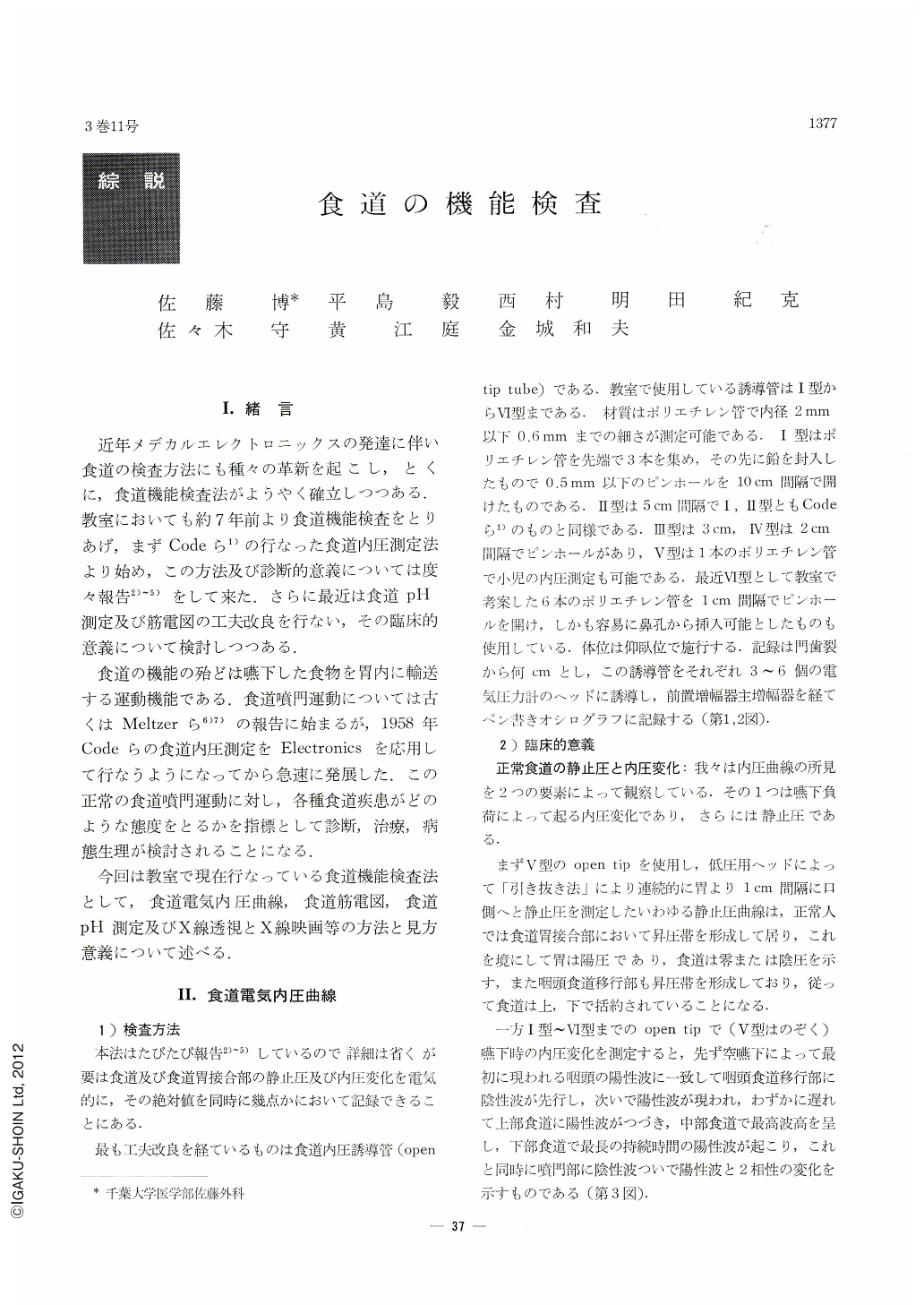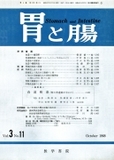Japanese
English
- 有料閲覧
- Abstract 文献概要
- 1ページ目 Look Inside
Ⅰ.緒言
近年メデカルエレクトロニックスの発達に伴い食道の検査方法にも種々の革新を起こし,とくに,食道機能検査法がようやく確立しつつある.教室においても約7年前より食道機能検査をとりあげ,まずCodeら1)の行なった食道内圧測定法より始め,この方法及び診断的意義については度々報告2)~5)をして来た.さらに最近は食道pH測定及び筋電図の工夫改良を行ない,その臨床的意義について検討しつつある.
食道の機能の殆どは嚥下した食物を胃内に輸送する運動機能である.食道噴門運動については古くはMeltzerら6)7)の報告に始まるが,1958年Codeらの食道内圧測定をElectronicsを応用して行なうようになってから急速に発展した.この正常の食道噴門運動に対し,各種食道疾患がどのような態度をとるかを指標として診断,治療,病態生理が検討されることになる.
The latest examination methods on the functions of the esophagus are reported in this article. They deal with: electrical records of pressure changes within the esophagus, its electromyographs, the pH measurement within the esophagus, and the pharmacological X-ray examination of the same with its discharge-rate and the X-ray picture as an index.
Records of pressure changes within the esophagus are especially relevant to the diagnosis of shortened esophagus, esophageal varices, hiatus hernia, esophageal cancer, carcinoma of the cardia, and achalasia, or the idiopathic dilatation, of the esophagus. Clinically speaking, this measurement is most valuable in the cases of achalasia and the cancer of the lower esophagus as well as that of the cardia.
In the case of cardiac cancer pressure change shows a distinctive pattern, in that the positive wave there is discontinuous. It can be further classified into three groups: teeth-of-a-saw pattern, stairs pattern and the dome pattern.
The characteristics of achalasia are: rise in the stationary pressure within the esophagus and the connecting area, lack of negative wave during pressure changes in the connecting area, and the disappearance or the lowering of the positive wave in the esophagus. These informations are a great help in diagnosis.
As for the electromyograph, we are now able to conduct simultaneous recordings at three points. At the present stage, however, this is only applicable to the diagnosis of achalasia.
The pH measurement is of great use in diagnosing esophagitis, especially reflux or peptic esophagitis as sequelae of the excision of the cardia or cardioplasty.
The discharge rate and the X-ray picture are the means by which we can grasp the discharge function and activity of the esophagus, visually as well as quantitively. In this article some of the clinical significance of the utilization of these means are evaluated.
We firmly believe that the examinanion methods described in this article are fast becoming the indispensable tools for diagnosing esophageal diseases.

Copyright © 1968, Igaku-Shoin Ltd. All rights reserved.


